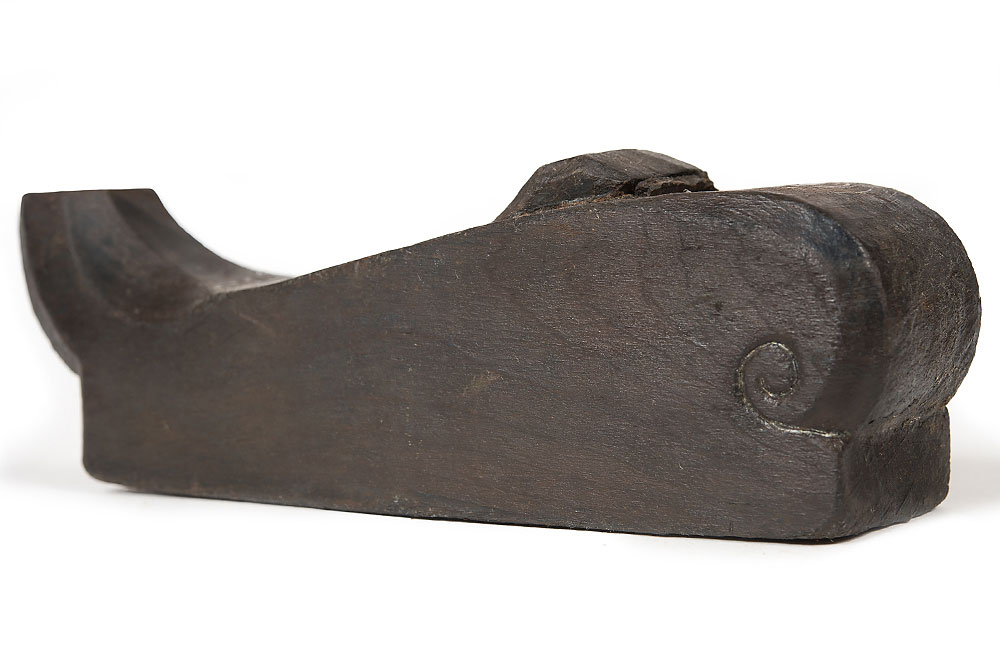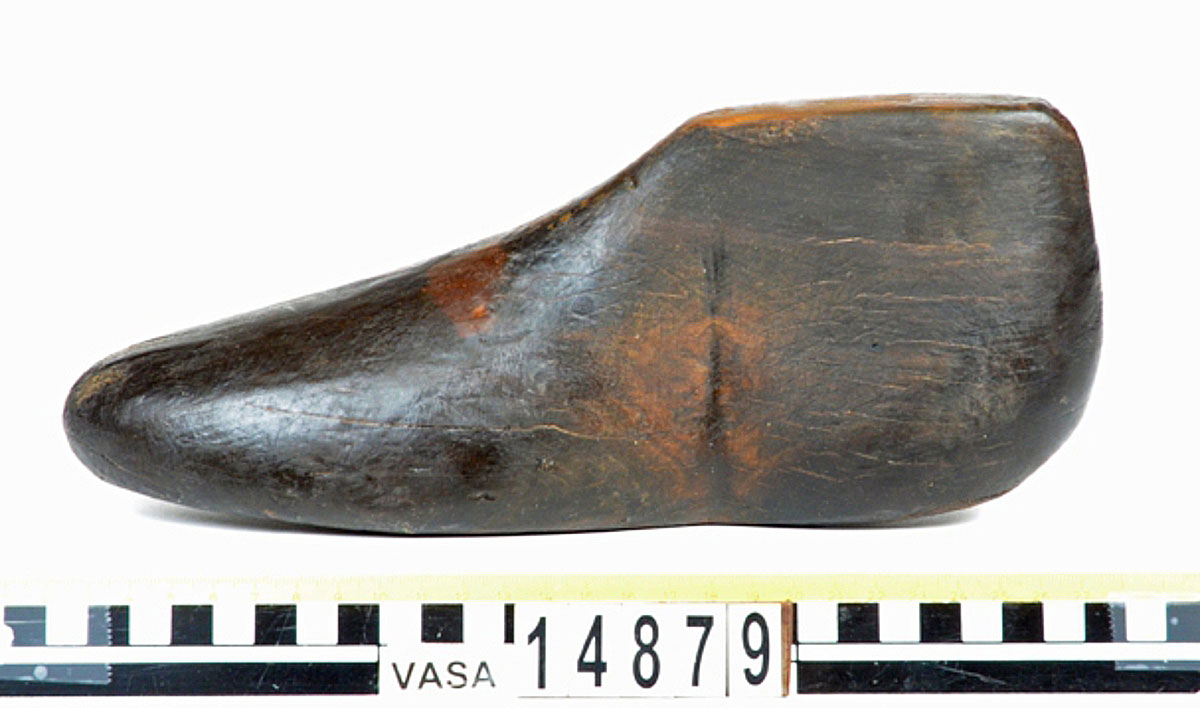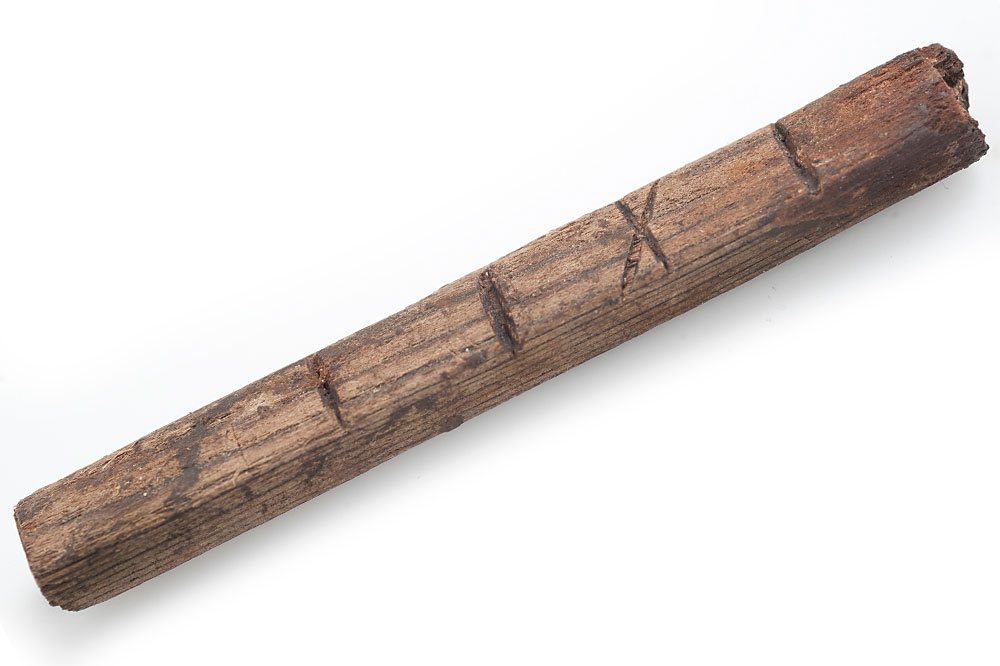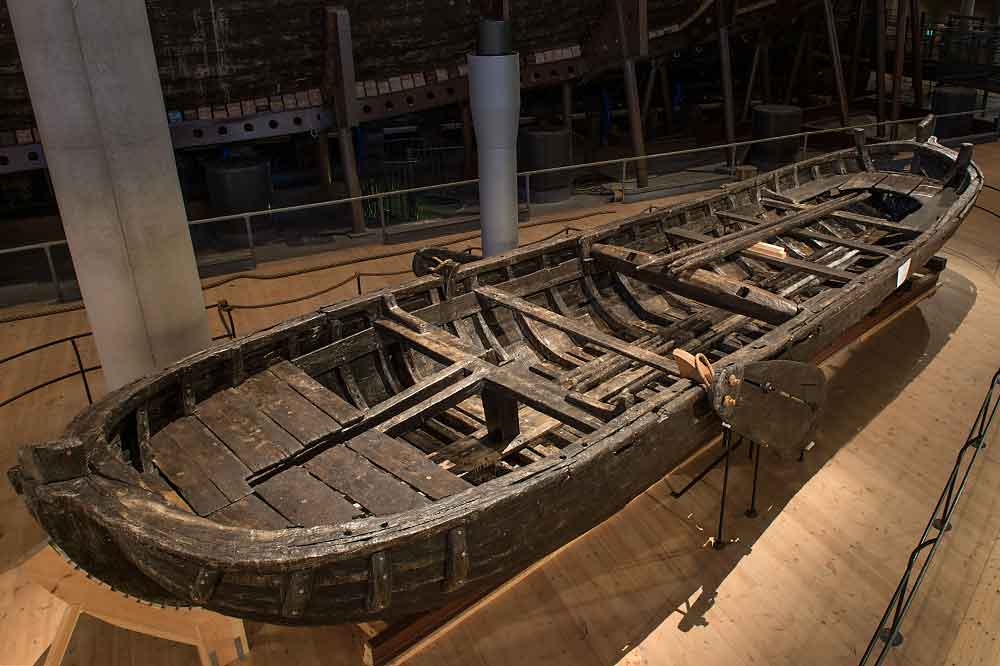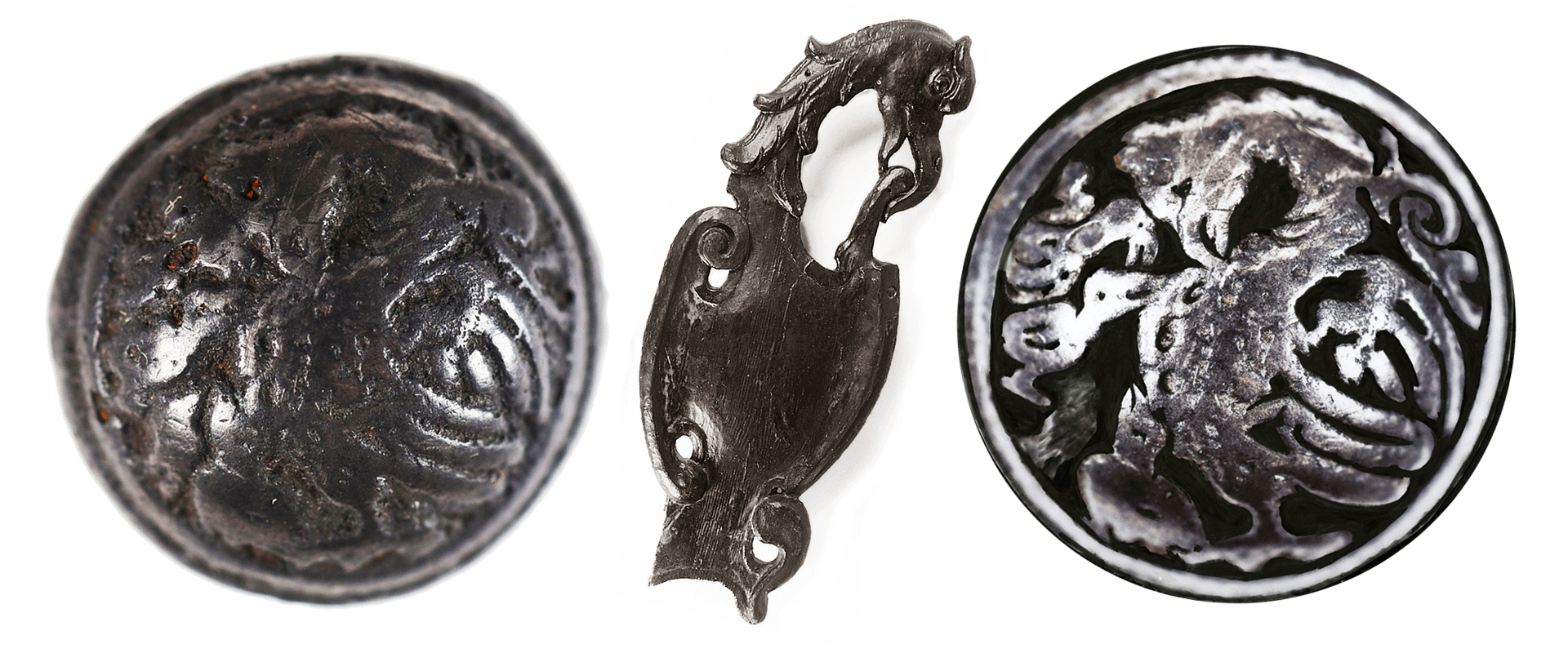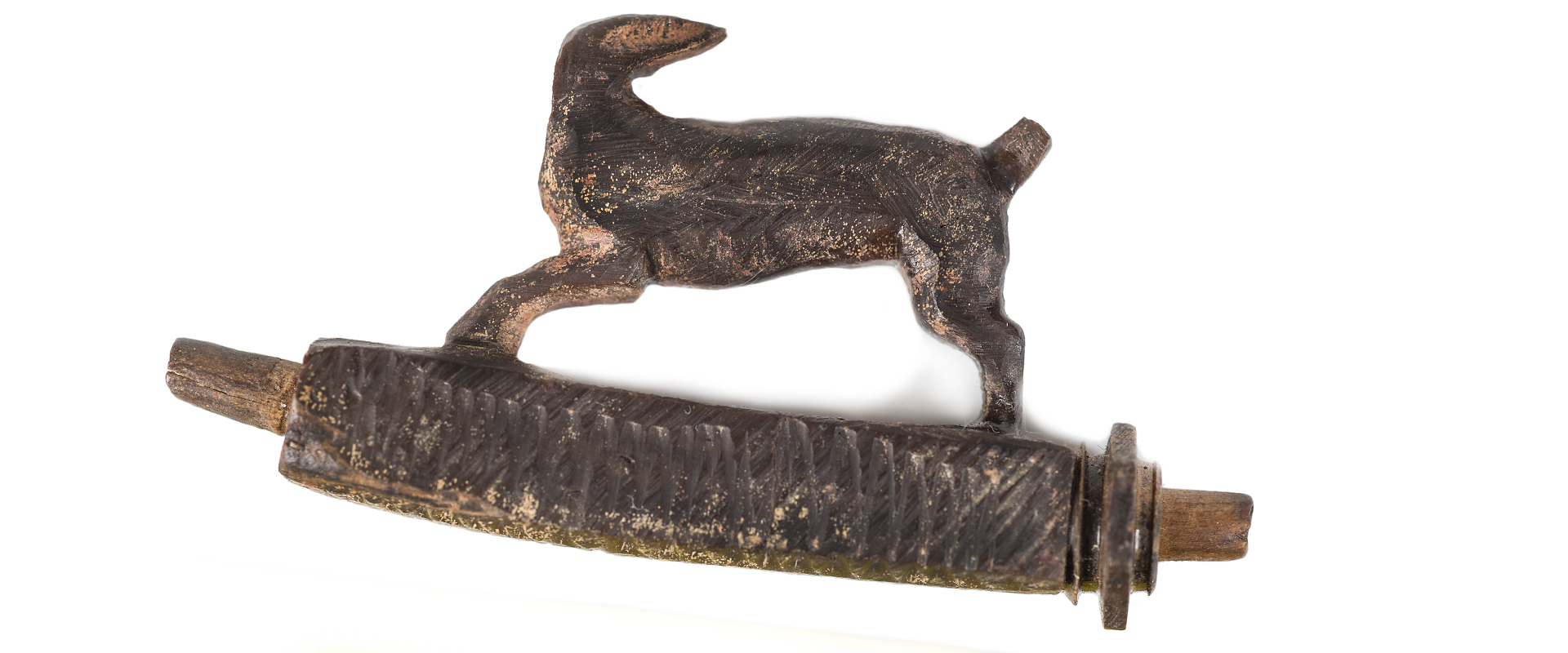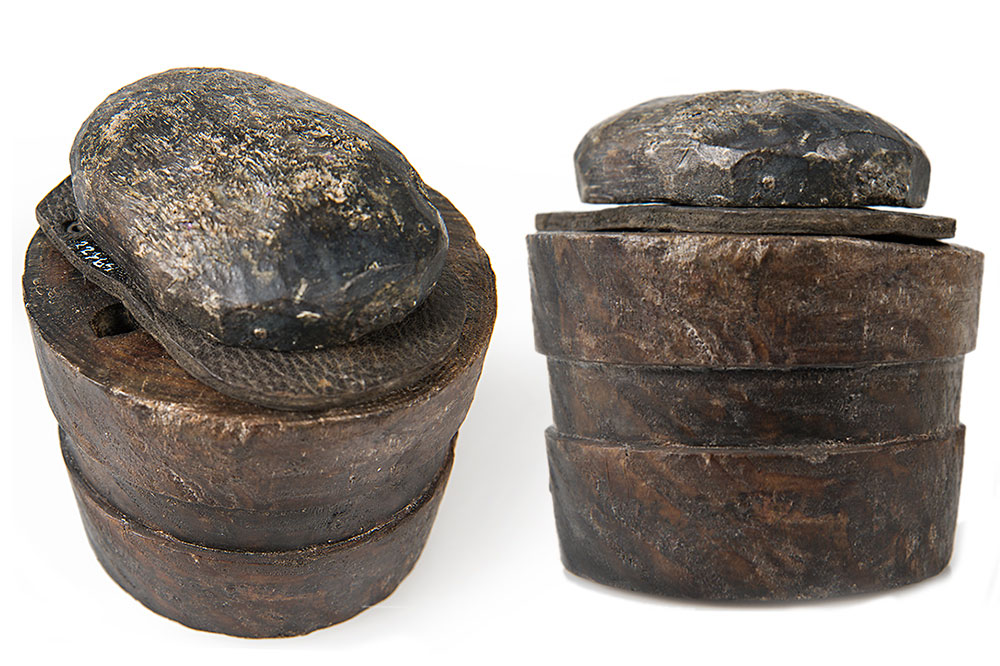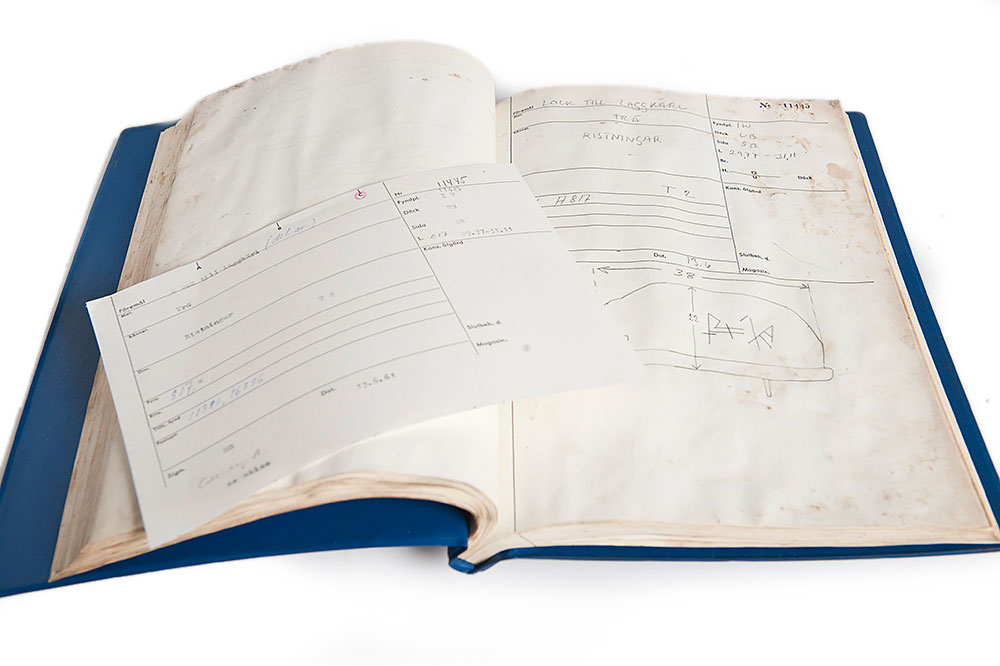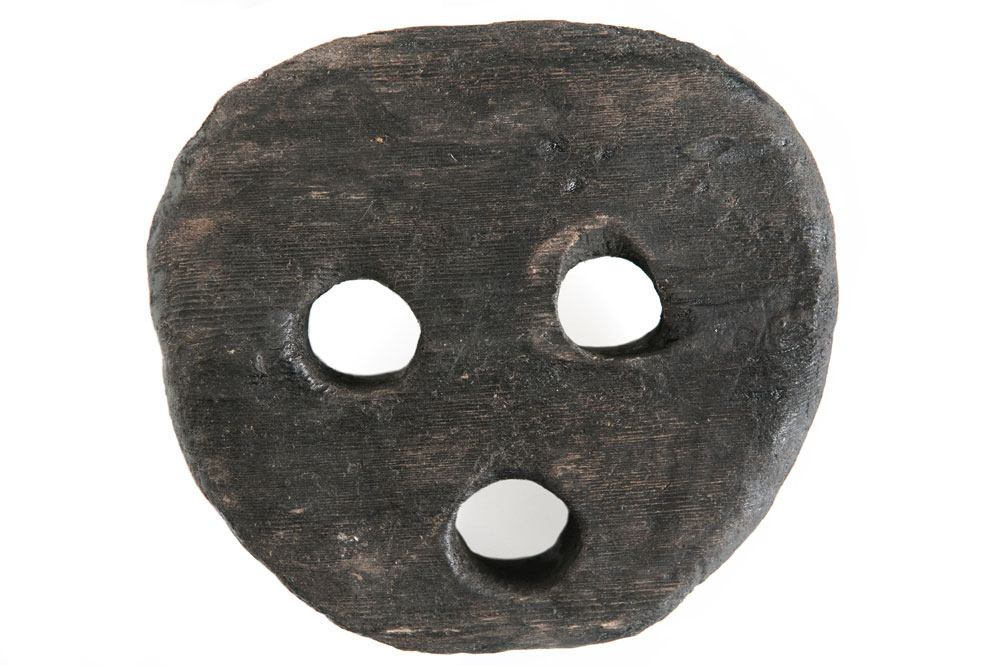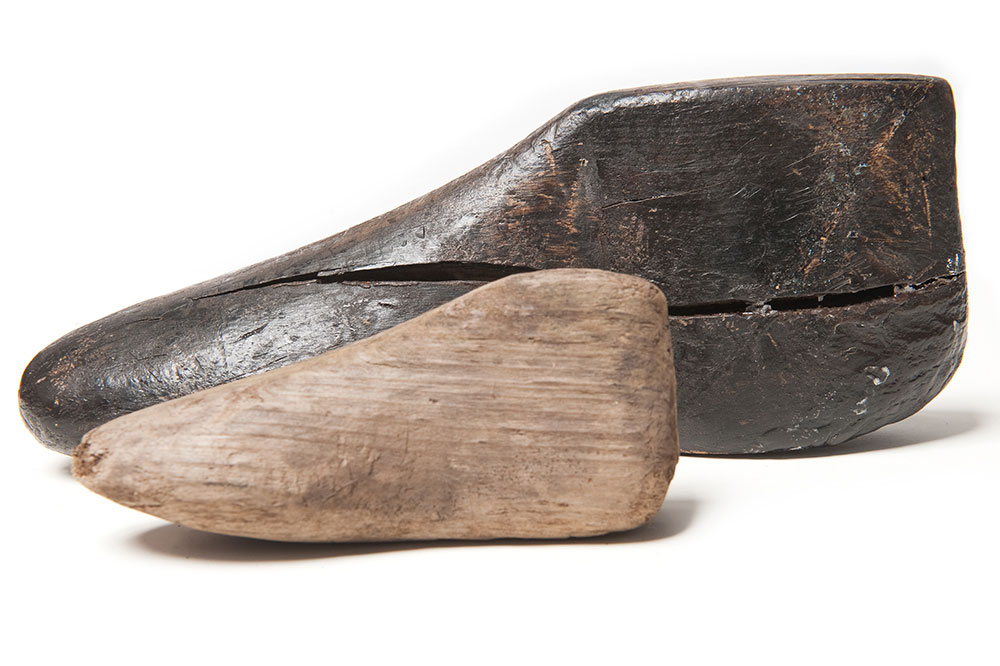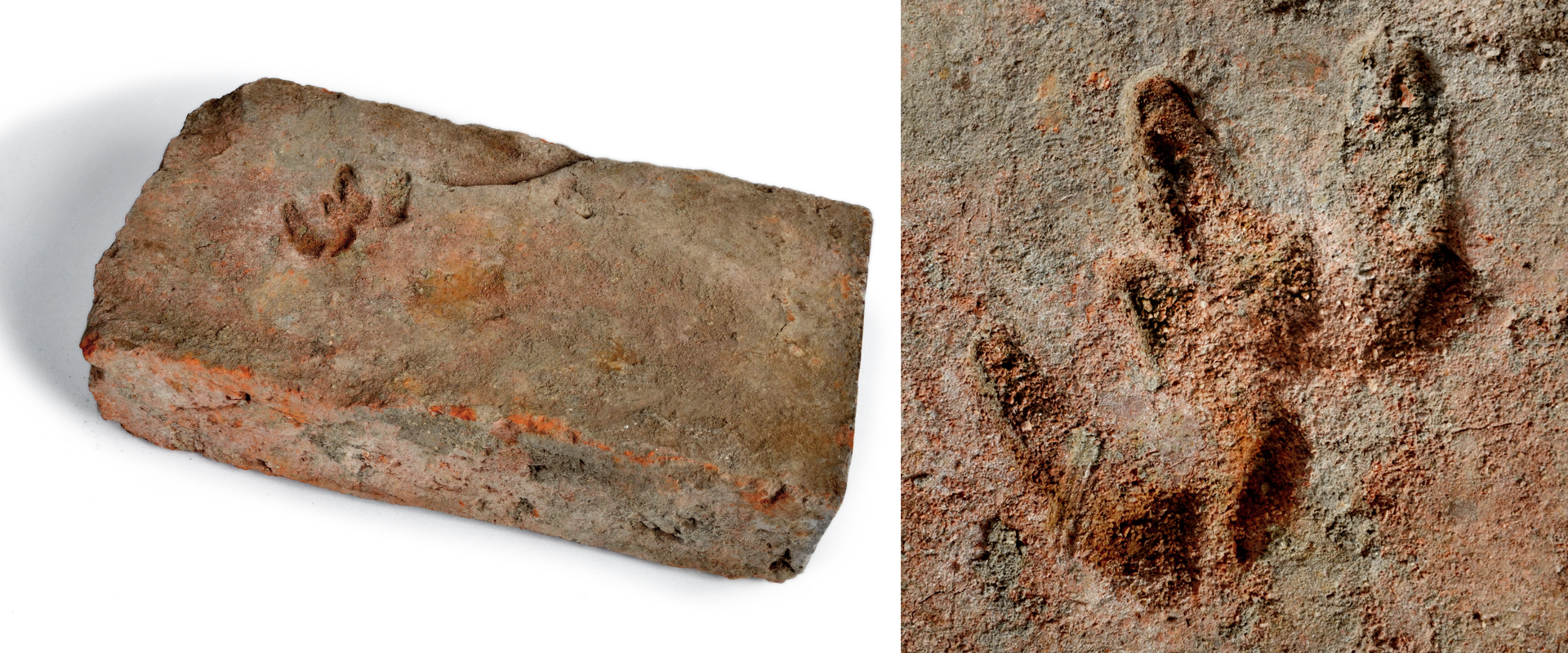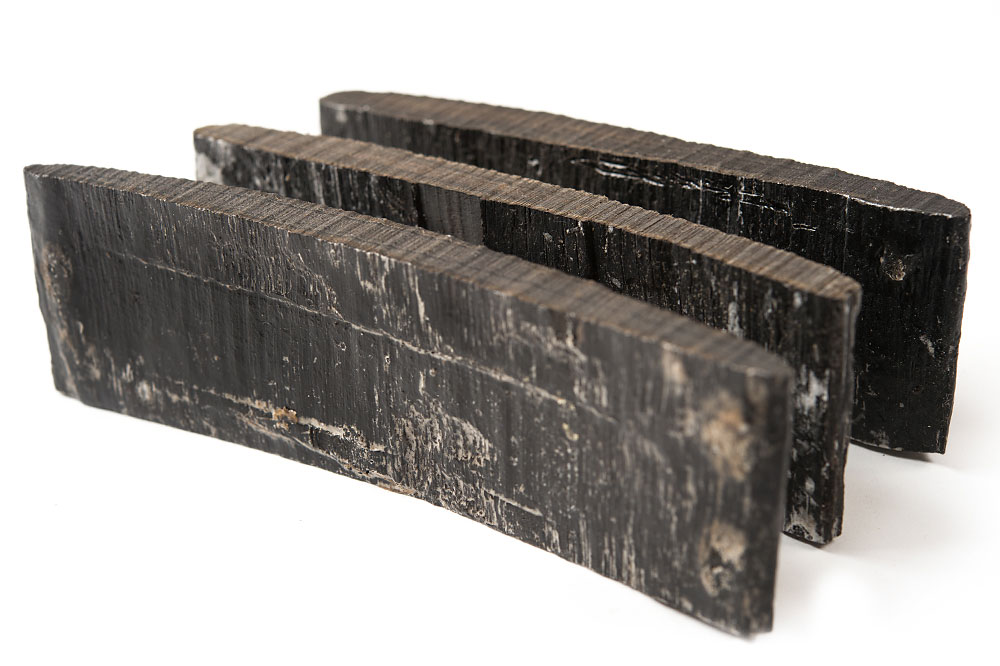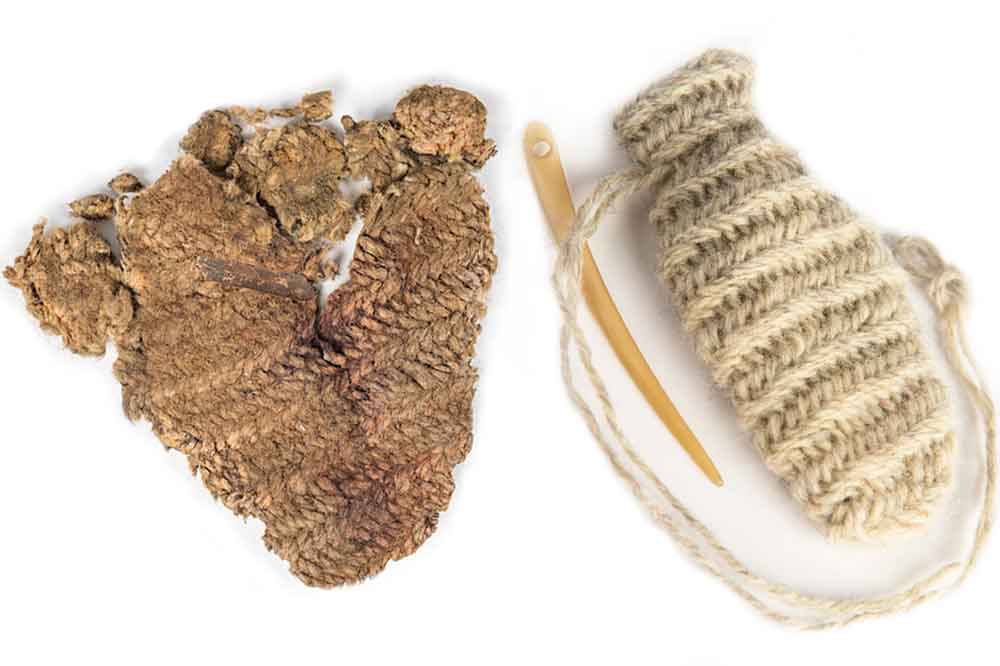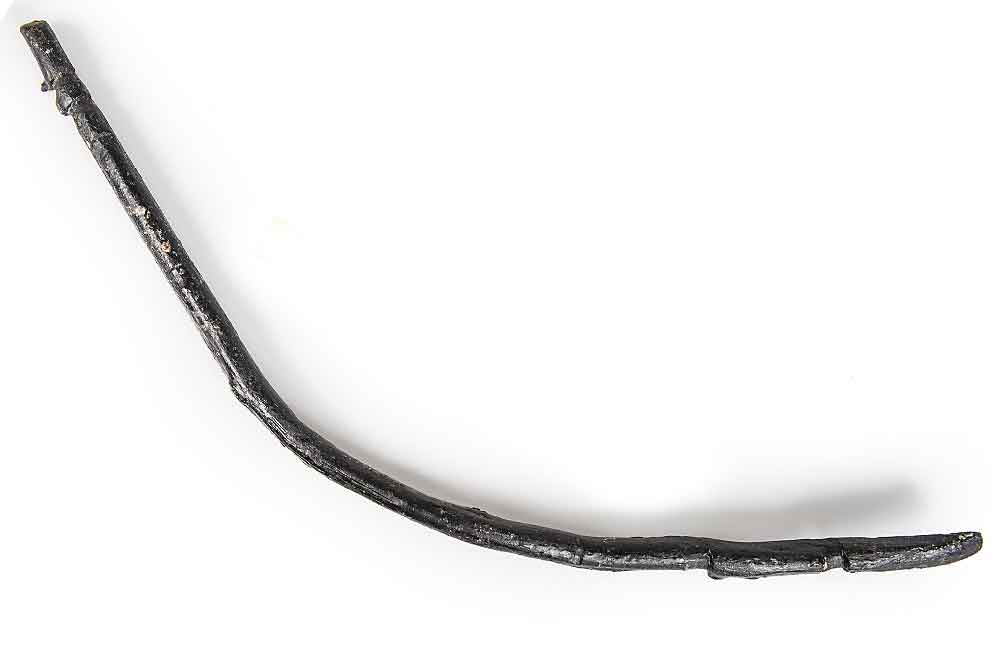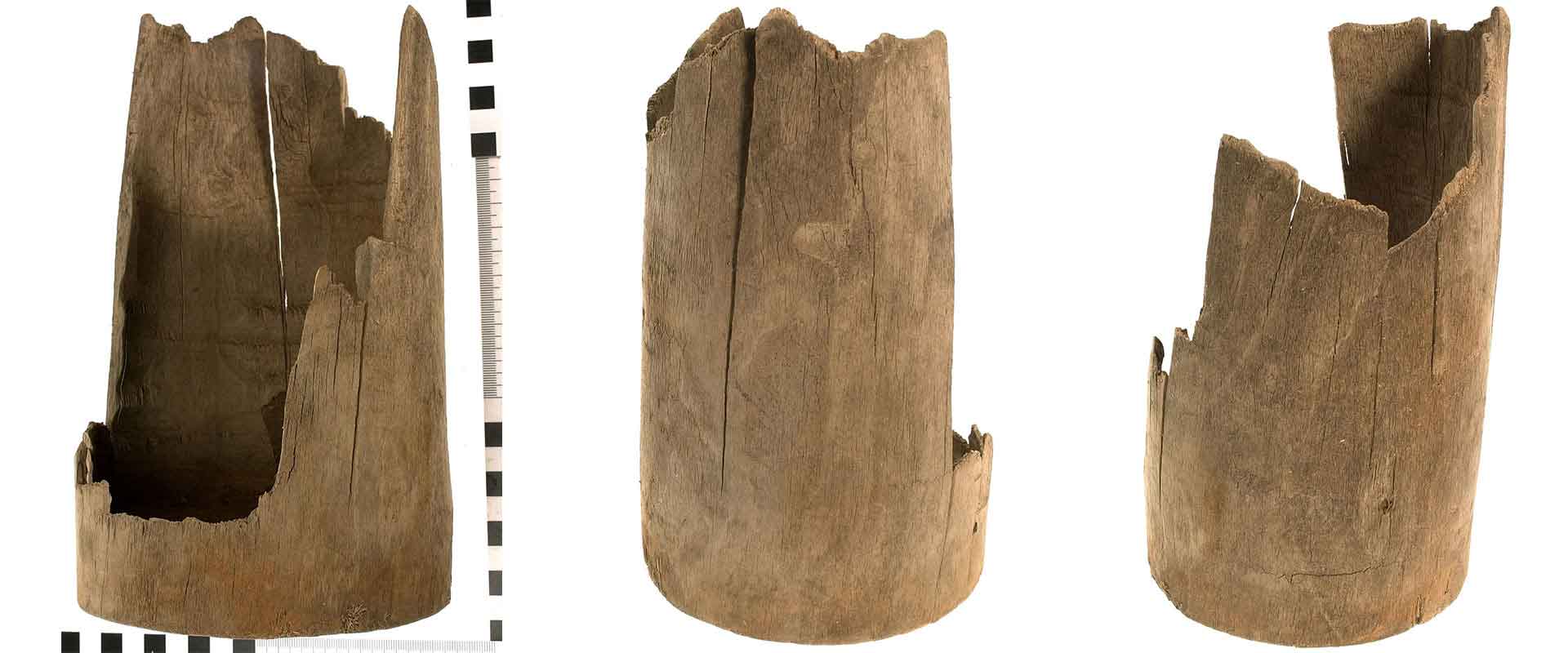This is a 17th century Dutch-style smoothing plane. It is identifiable by its characteristic tea-kettle profile overall and the heart-shape at the mouth. Planes like this would have been common in early 17th century Dutch shipyards, and one can see echoes of that shape in planes still in use today.
This particular plane is a unique example among Vasa’s collection. Of the nine presently identified planes found aboard Vasa, it is the only example of a plane carved from one contiguous block of wood. The other planes in the collection have forward handles that are either dovetailed or mortised in place. The decorative elements like the scroll carving at the heel and the heart around the mouth on this plane suggest a certain attention to detail was afforded in production.
The carpenters smoothing plane
This was the only plane found in the ship’s carpenter’s chest. The chest was discovered during excavations in a cabin on the orlop level of the ship. The tool chest also contained a set of braces, a square, a bevel gauge, a ruler, several hammer, axe and adze handles, and a greasebox. There were also several personal belongings discovered alongside the tools, including a cap, a single coin, some fabric, and a bentwood box.
From a research and conservation standpoint, this plane is also notable for its beautifully clear grain structure. It can often be difficult to identify what sort of tree conserved wood one was without taking a core sample for analysis. However, in this case, the flecked, freckle-y pattern readily visible across the surface is a clear indication that this plane was carved out of a block of beech.
